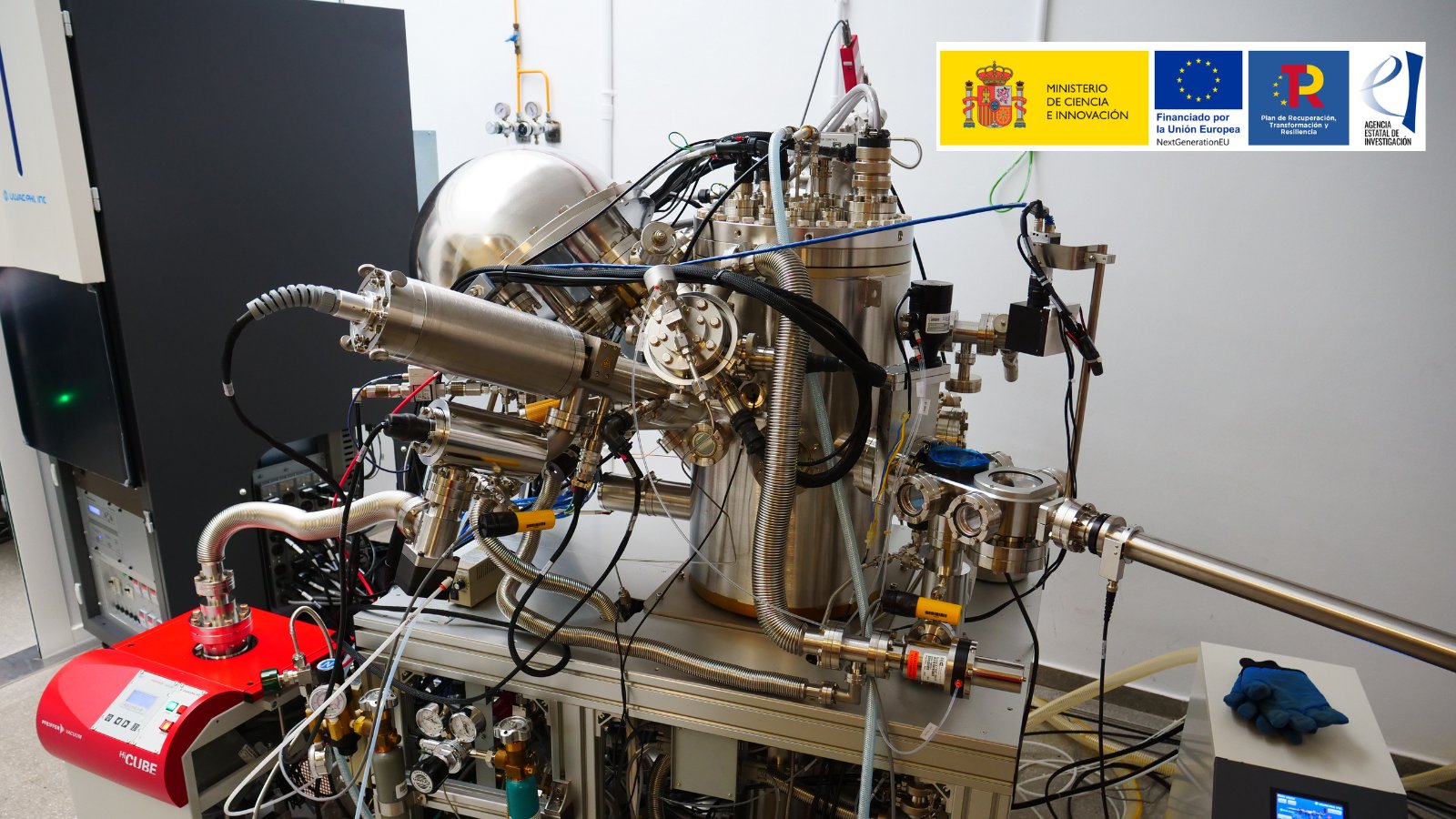
ESFOSCAN
Type of equipment
ESFOSCAN is a photoelectron spectroscope capable of performing chemical and elemental analysis using X-Ray Electron Spectroscopy (XPS), also known as Electron Spectroscopy for Chemical Analysis (ESCA).
Equipment Description
ESFOSCAN equipment is based on the PHI VersaProbe 4 model, manufactured by Physical Electronics of USA (part of ULVAC, Japan). This instrument includes:
- A scanning monochromatic X-ray source for chemical state analysis with high spatial resolution and X-ray induced secondary electron imaging (SXI).
- A hemispheric electron energy analyzer providing XPS spectral, map, depth profile, line scan and angle resolved analysis with high sensitivity and high dynamic range.
- An ultra-high vacuum chamber (UHV), which avoids chemical contamination and ensures reliable results when studying the surface of samples.
- A dual beam charge compensation system that neutralizes the electrical charge that may accumulate on the sample during analysis using both low energy electrons and ions (few eVs).
- 3 types of ion guns:
- Monoatomic Argon ion gun that provides a surface cleaning capability as well as XPS chemical depth profiling at high or low ion impact energies, also allowing sputter depth profiling with monolayer depth resolution.
- 20 kV C60 ion gun which provides surface cleaning capability, while maintaining the chemical states of polymer samples.
- 20 kV Argon gas cluster ion gun (GCIB) providing sputter depth profiling in mixed inorganic and organic materials.
ESFOSCAN not only enables XPS measurements, but also includes state-of-the-art features: a high-intensity windowless discharge source capable of producing He(I) and He(II) photons for ultraviolet photoelectron spectroscopy (UPS). Likewise, it has a low-energy electron source that preserves the chemical structure of the sample, enabling low-energy inverse photoemission spectroscopy (LEIPS).
What are the uses of this equipment?
Qualitative and quantitative chemical analysis of solid sample surfaces at the nanometer scale in z axis (approximately 5 nm depth), and at the micrometer scale (from 100 to 10 microns) in x-y axis
Evaluations of the chemical environment of elements present at close range (chemical bonding), as well as analysis of the contributions of different chemical states of the same element (e.g. oxidations versus metallic components).
Studies of problems originating from design or production processes (such as surface contaminations) e.g. in paints, chemicals, pharmaceuticals, wiring, metallic coatings or dental implants.
Profilometric studies of materials with multilayer structures (up to a maximum of 0.5 microns).
State-of-the-art studies on the characterization of the occupied electronic states (valence band) as well as the characterization of the unoccupied chemical states (conduction band) of solid materials by UPS and LEIPS, respectively.
Technical specifications
The X-ray Aluminum source uses a focused electron beam scanning over an aluminum anode for X-ray generation (Al Kα line of 1486.6 eV energy) and a quartz crystal monochromator that scans the X-ray beam on the sample surface. The minimum X-ray beam size is ≤ 10.0 μm in x and y directions.
The XPS energy resolution for an Ag standard is ≤ 0.50 eV of with a Full Width at Half Maximum (FWHM) for the Ag 3d 5/2 peak. The UPS sensitivity and energy resolution is ≥3 Mcps and 100 meV ≥ Fermi edge in width (20% and 80%) for the Ag 4d peak. The LEIPS energy resolution is 0.45 eV ≥ Fermi edge in width (20% and 80%).
The vacuum system can operate at ≤ 6.7×10-8 Pa (5×10-10 Torr).
The dual beam charge compensation system utilizes both a cold cathode electron flood source (0-10 eV) and the very low energy ion capability of the argon ion sputter gun (less than 100 eV) to provide turnkey neutralization of all sample types.
The Ar ion sputter gun has a maximum beam current ≥ 5.0 μA (5 kV) working at a differential pressure ≤ 6.7×10-6 Pa (5×10-8 Torr).
The C60 ion sputter gun has a maximum beam current ≥ 40 nA, a differential pressure ≤ 6.7×10-6 Pa (5×10-8 Torr) and a minimum beam size ≤ 0.5 mm.
The Ar gas cluster ion sputter gun has a maximum beam current ≥ 40 nA (20 kV), ≥ 20 nA (5 kV), ≥ 10 nA (2.5 kV); and a minimum beam size ≤ 500 μm (20 kV).



